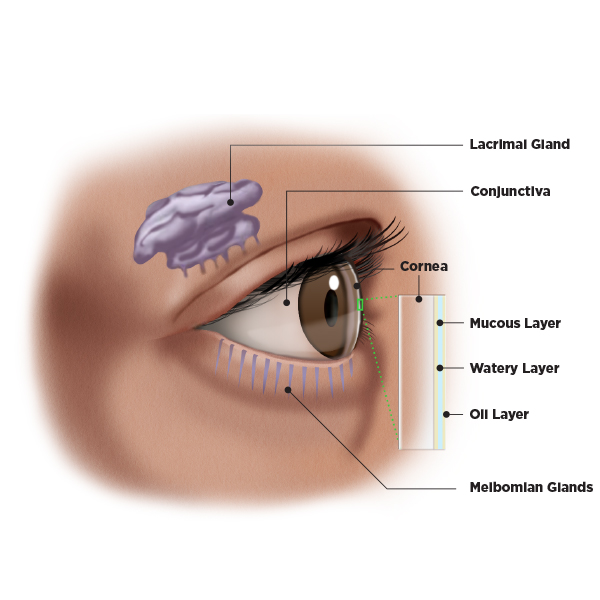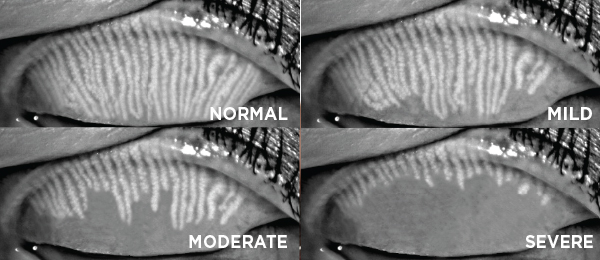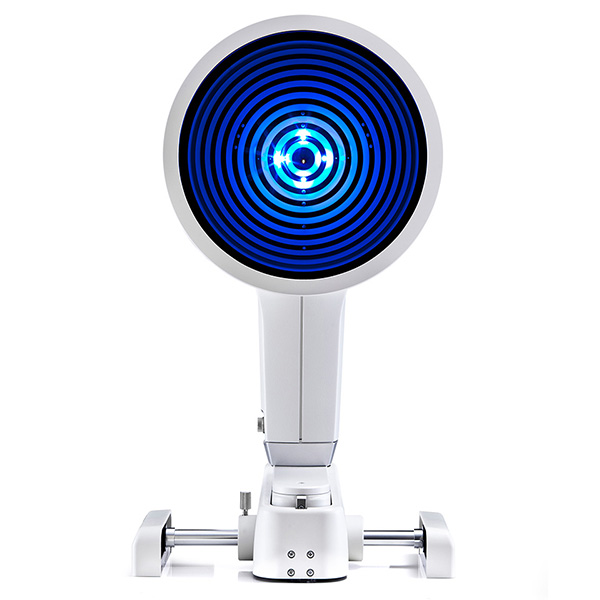What are the most common symptoms of Dry Eye Disease?
Dry Eye Disease (DED) is a common condition and affects 30% of Canadians. More common with age, DED occurs when there is significant decrease in tear production or significant increase in tear evaporation. In most cases, DED is caused by continued and accelerated tear evaporation in a condition known as Meibomian Gland Dysfunction (MGD). Conditions such as DED and MGD are chronic conditions that can progress if left untreated.
What are the most common symptoms of Dry Eye Disease?
- Red eyes
- Irritated or itchy eyes
- Inflammation around the eye or of the eyelid
- Sore, painful eyes
- Sensitivity to light
- Discharge or excess “eye crust”, especially after waking
- A feeling of grit or sand in the eye

Understanding the Tear Film
The moisture in your eyes is established through the balance of the tear film. There are three components in the tear film: a mucus layer, an aqueous layer, and an outer lipid layer. The lacrimal gland determines the tear volume and the outer lipid layer that forms the structure of the tear film. The meibomian glands located in both upper and lower lids produce complex oil that is added to the lipid layer with each blink, providing a barrier for the aqueous layer to prevent evaporation. Evaporative dry eye typically occurs when the meibomian glands are deficient in its oil production.


Dry Eye Disease with Meibomian Gland Dysfunction (MGD)
MGD is a condition where the glands that help keep your tear film oily get blocked, causing your tears to evaporate more easily and drying your eyes out. MGD is a chronic condition and will worsen over time, if not treated.
Changes or reduced oil production will impact the tear film and the eye. Over evaporation of tears will start the cycle of DED causing 2 major cases: inflammation caused by the change in tear chemistry and evaporation on the eye surface causing irritation and inflammation.
This cycle of DED changes allows MGD to progress, impacting the eye surface, eyelids, meibomian glands and aqueous glands. This ongoing cycle places further stress on the meibomian glands, further decreasing oil secretion which can lead to permanent unwanted tear evaporation. Chronic tear evaporation results in inflammation, causing damage to the aqueous glands and worsening DED with low tear production. Improving environmental and lifestyle changes can be beneficial for DED, but to get to the root of the problem, DED treatments are the best way to target the complex functions of over evaporation and inflammation.
How Do We Diagnose Dry Eye Disease?
A quick non-invasive exam with the Oculus Keratograph can evaluate the tear film health and show any signs of DED or MGD. Detailed images and measurements on the quality of your individual tear film construction and meibomian glands are among the many results obtained by the Oculus Keratograph. Utilizing this data allows your eyecare professional to provide a conclusive diagnosis and determine the best personalized treatment for you.

How can we treat it?
Beyond Vision offers a variety of state of the art treatments depending on your condition. With only a short office visit, our non-invasive treatments are proven effective with immediate relief.

